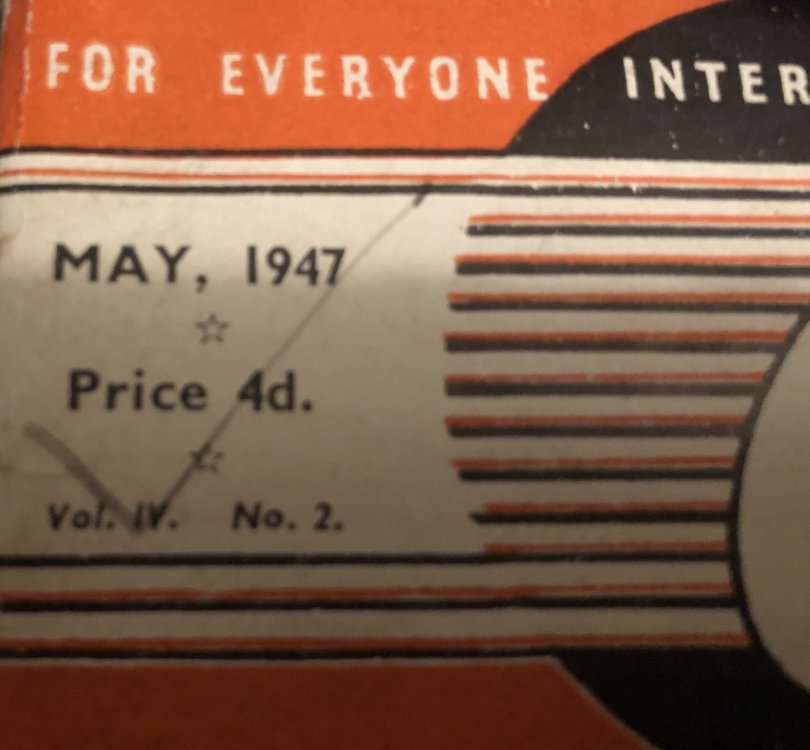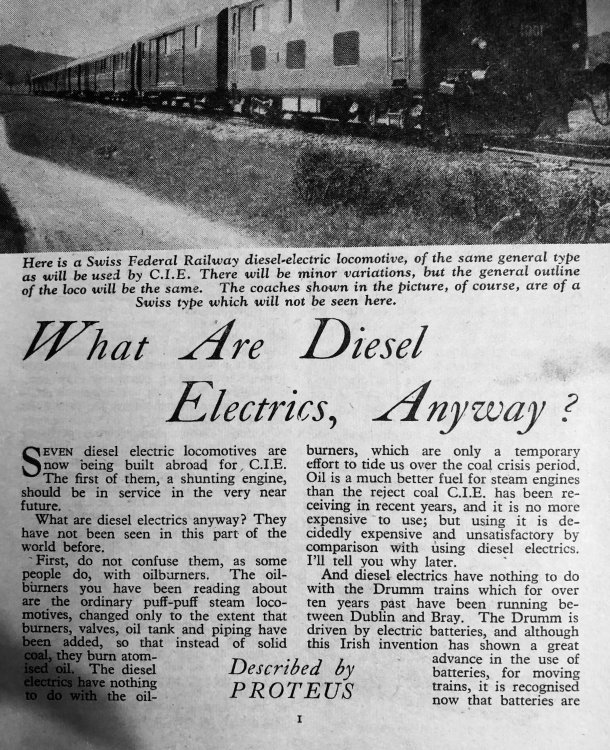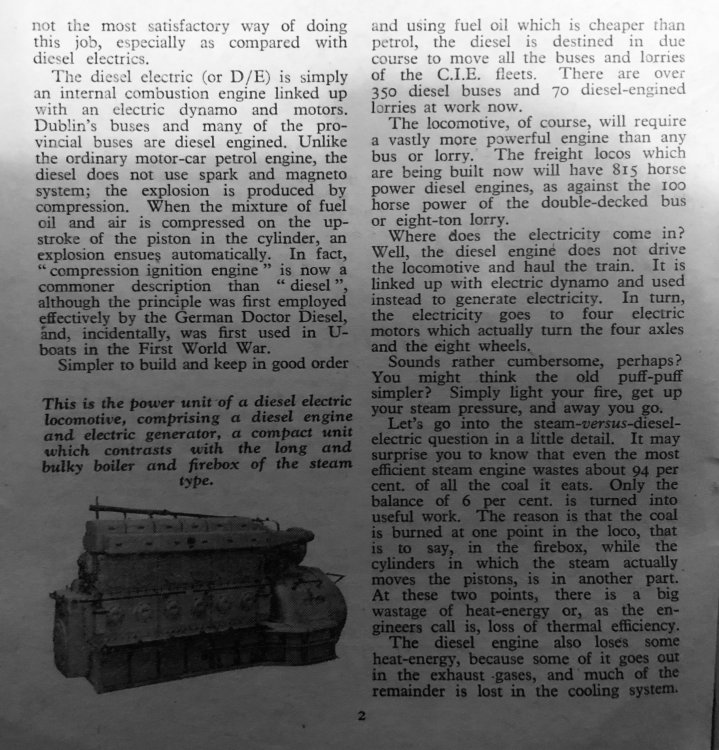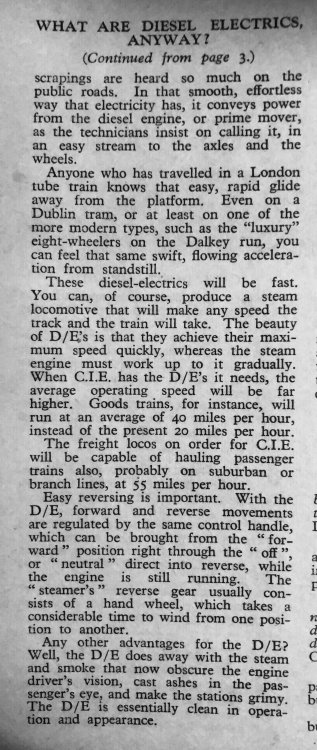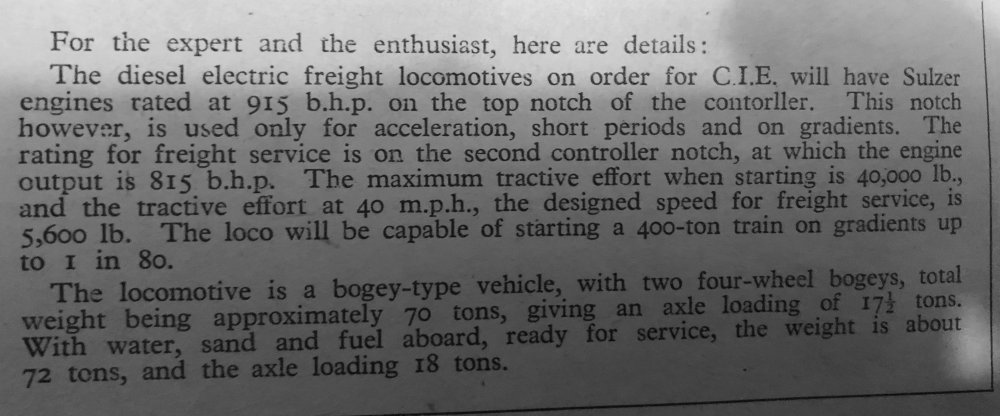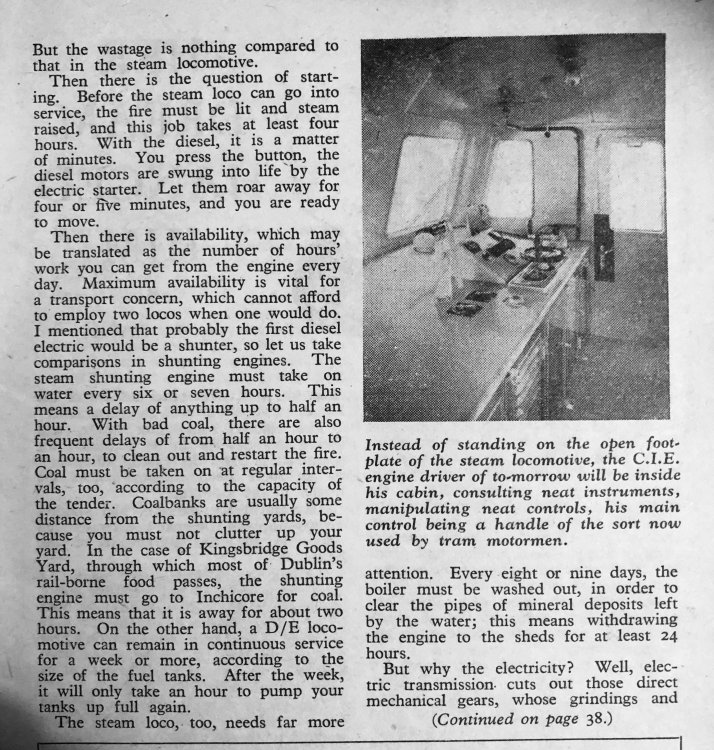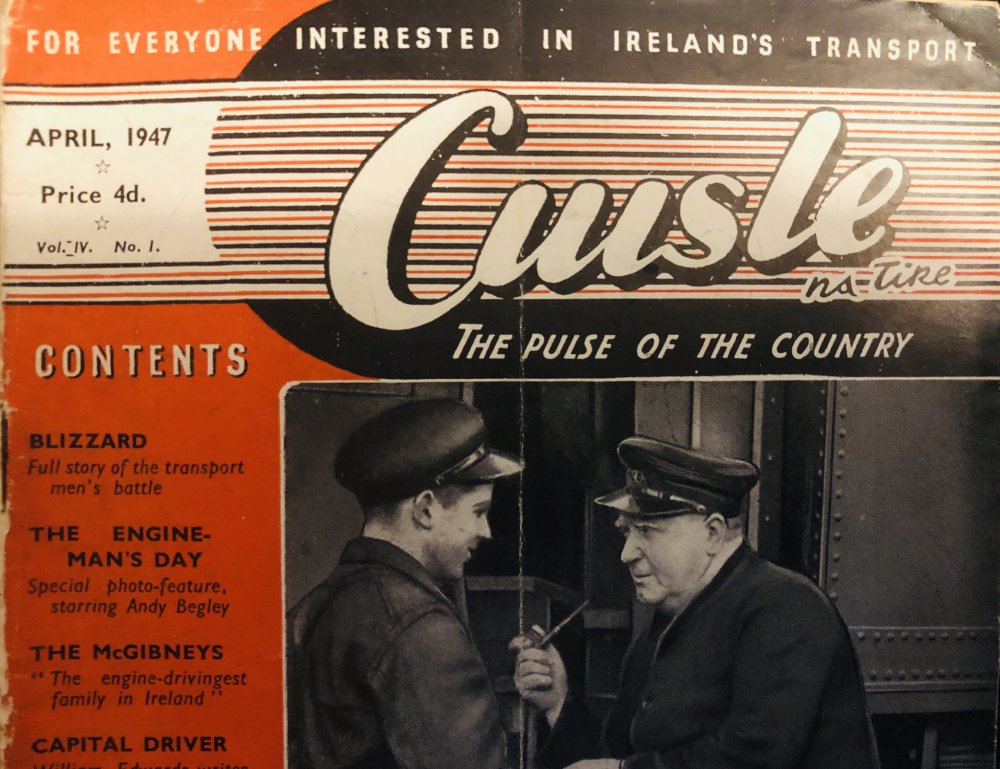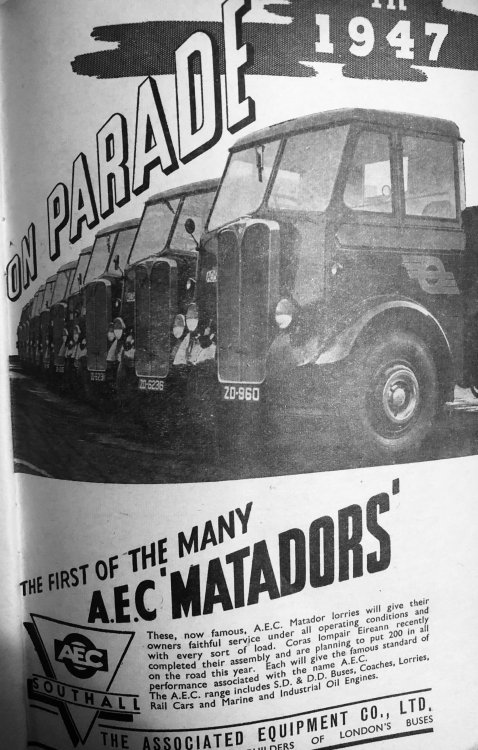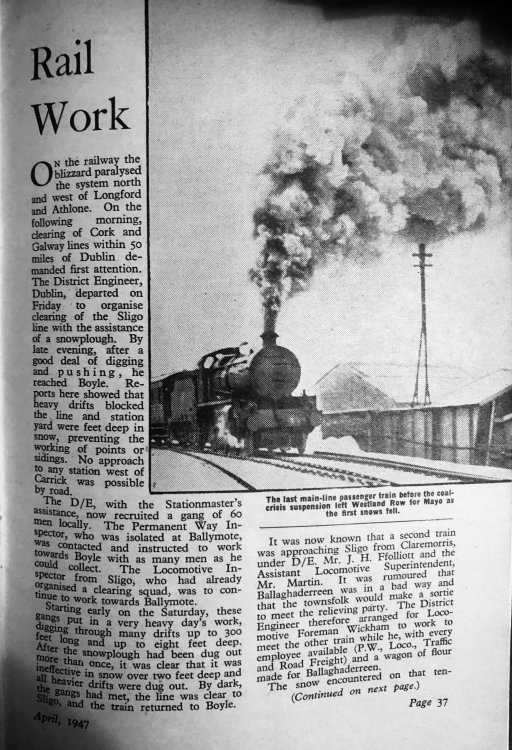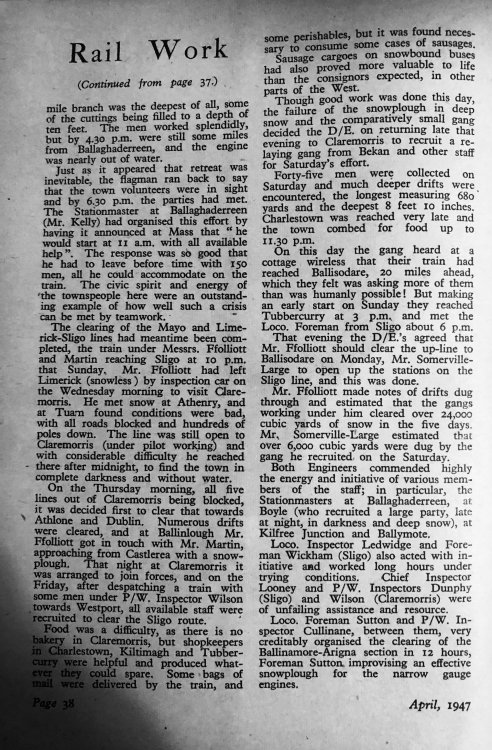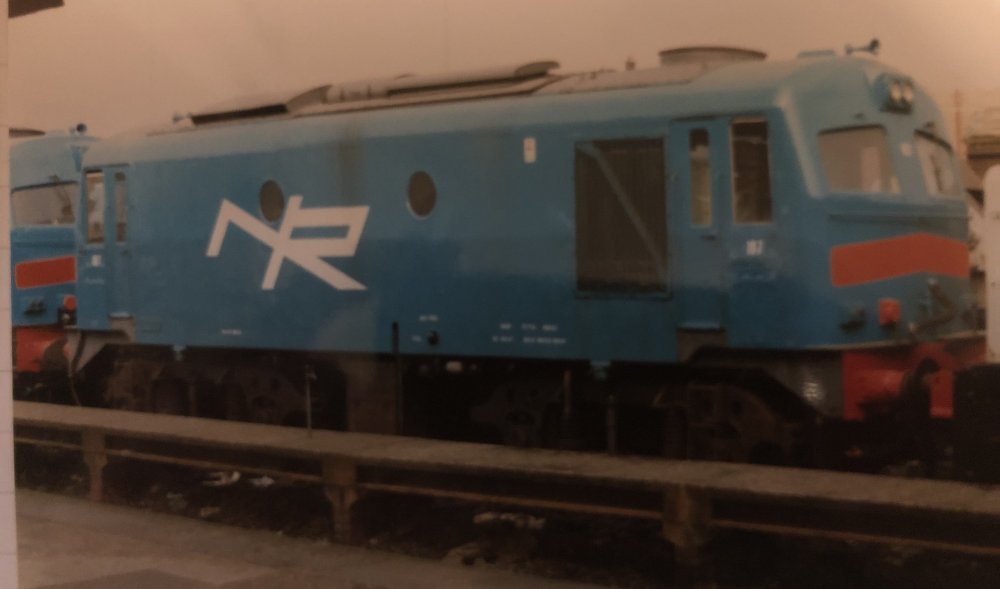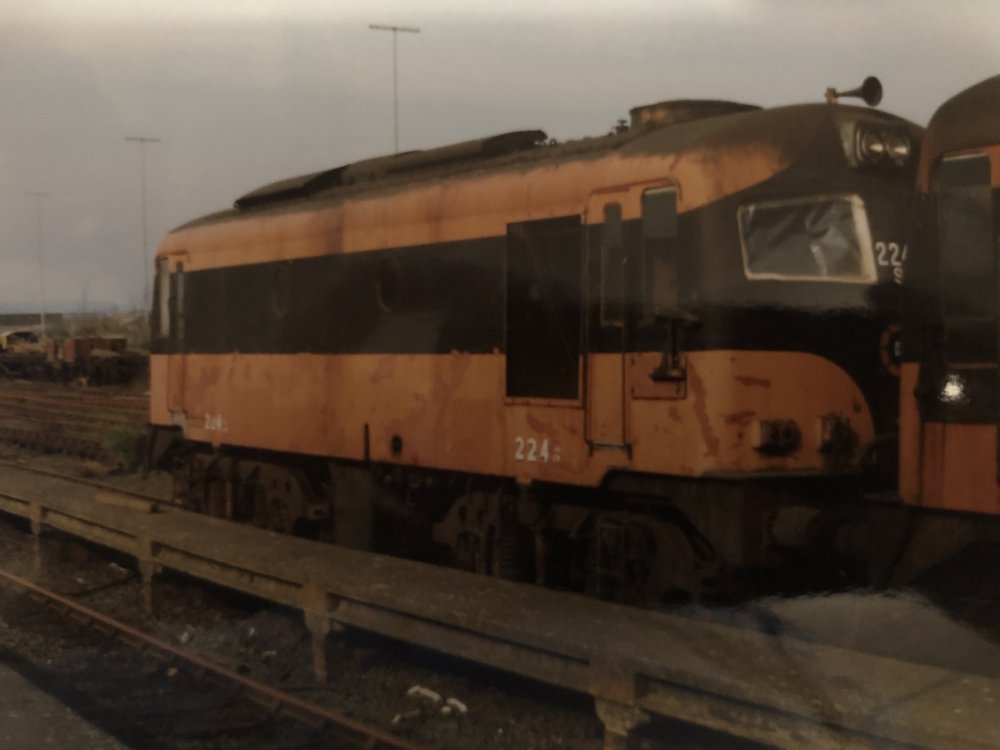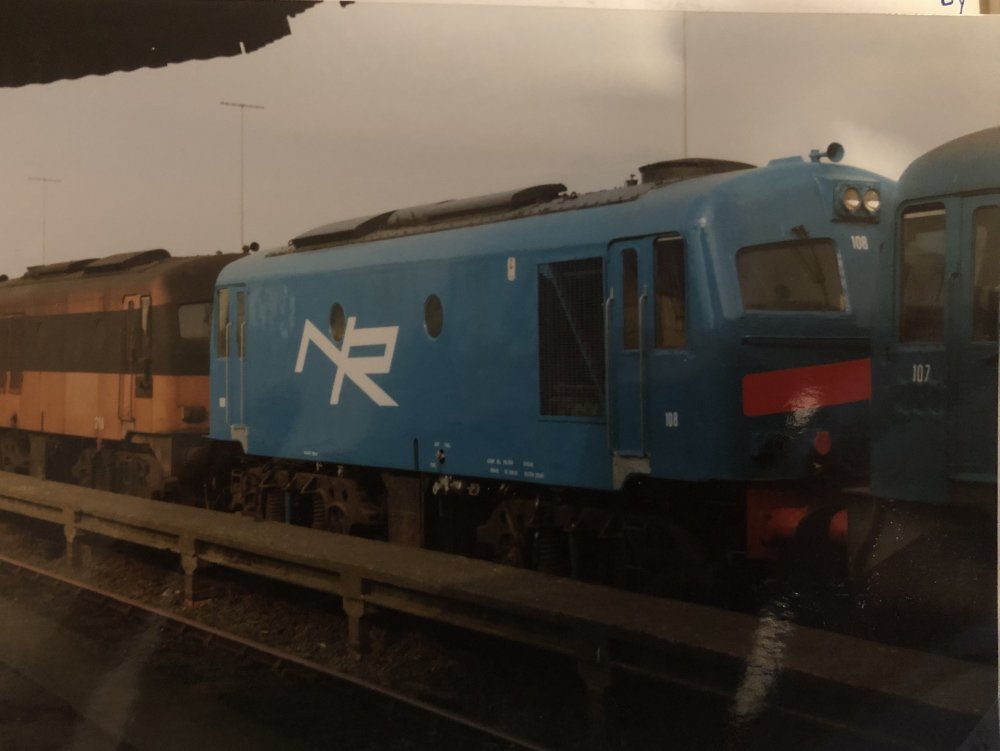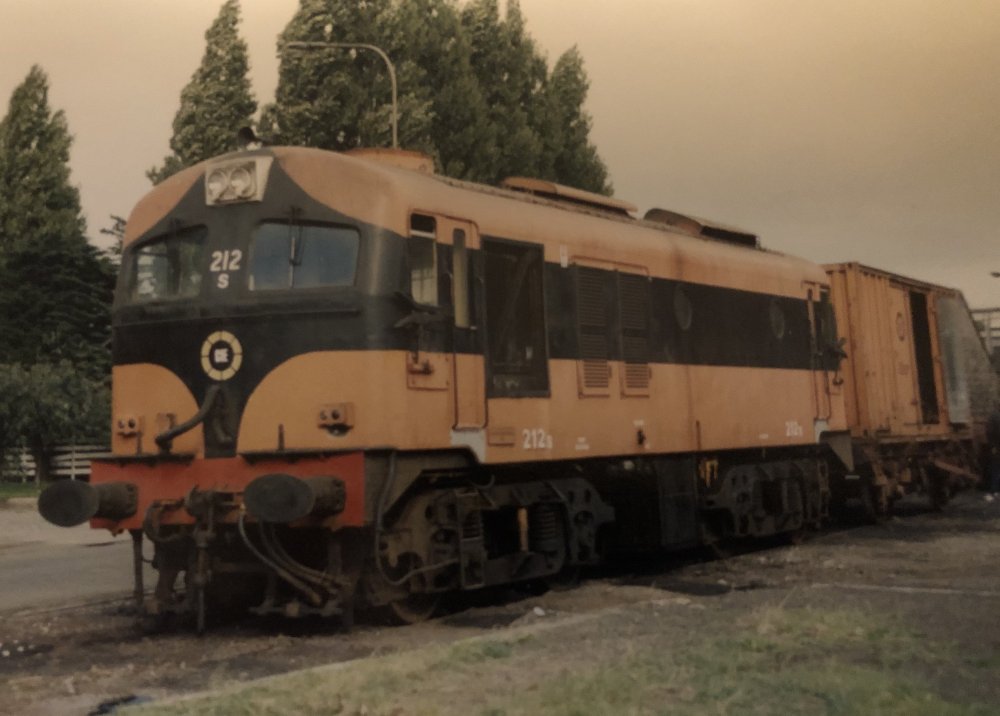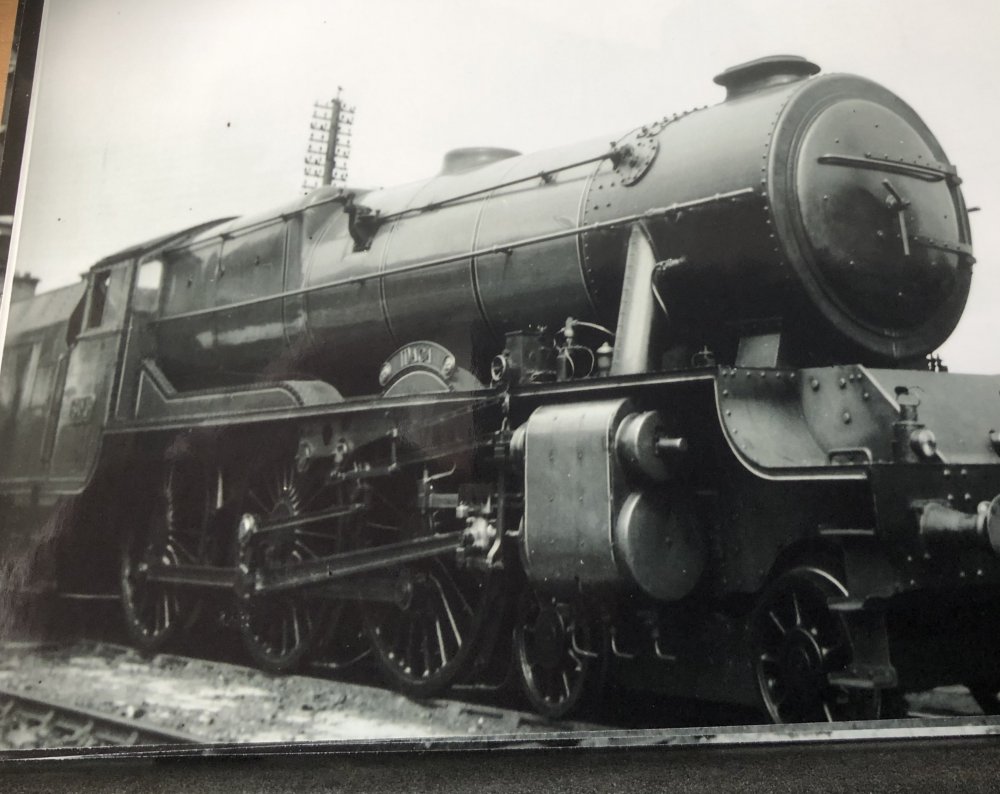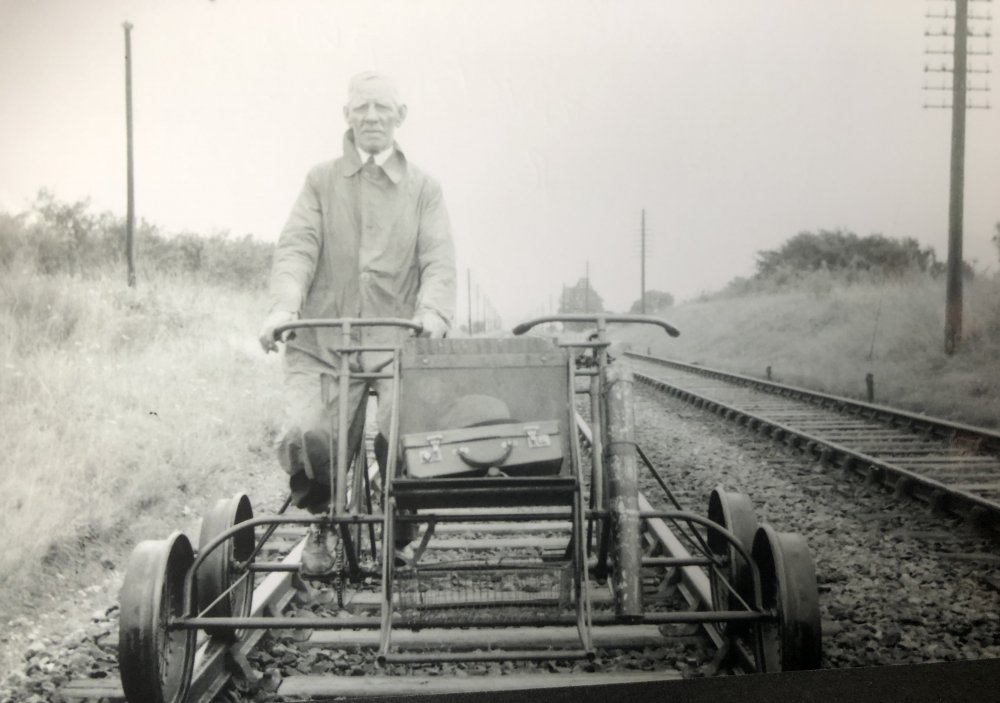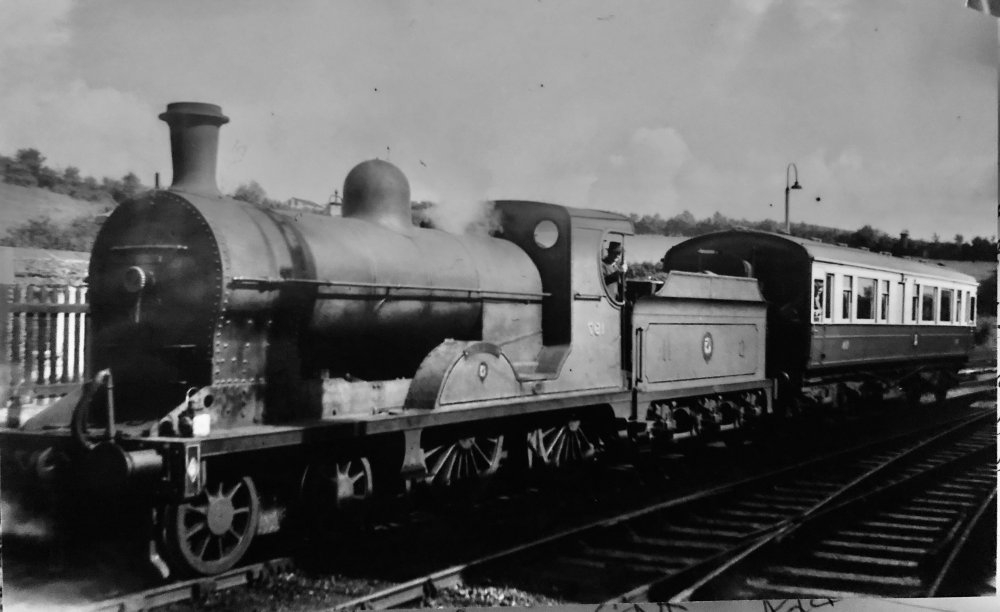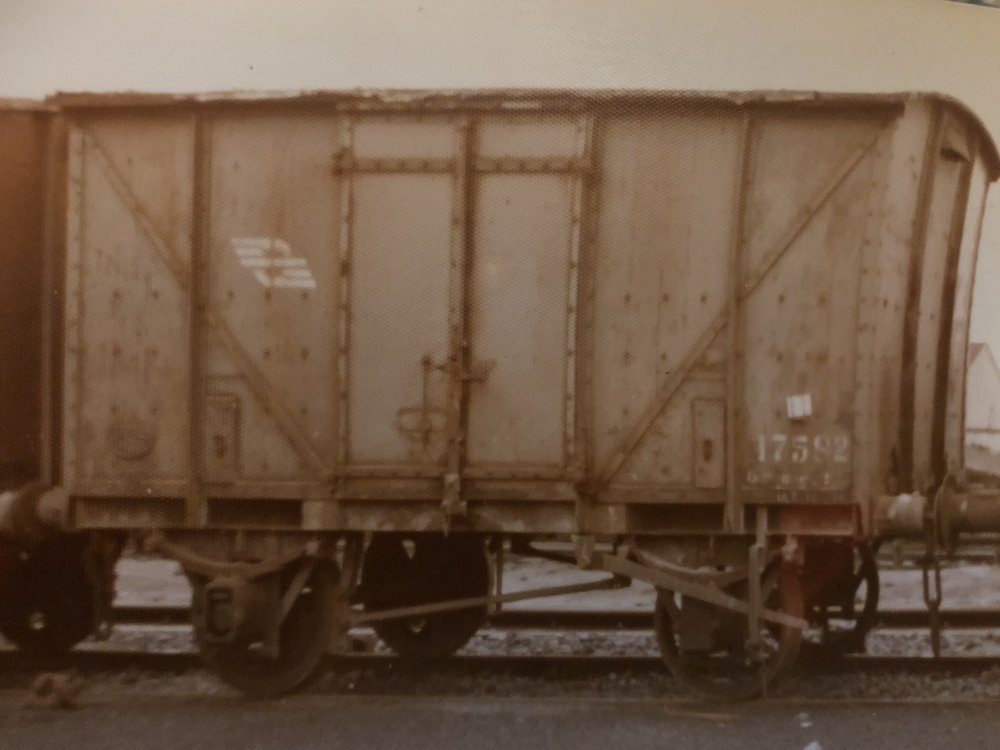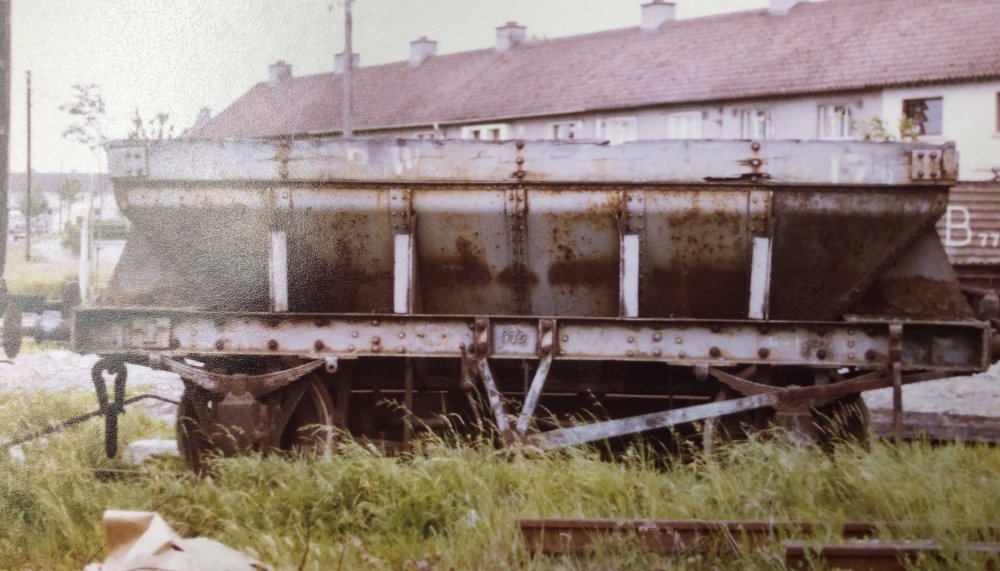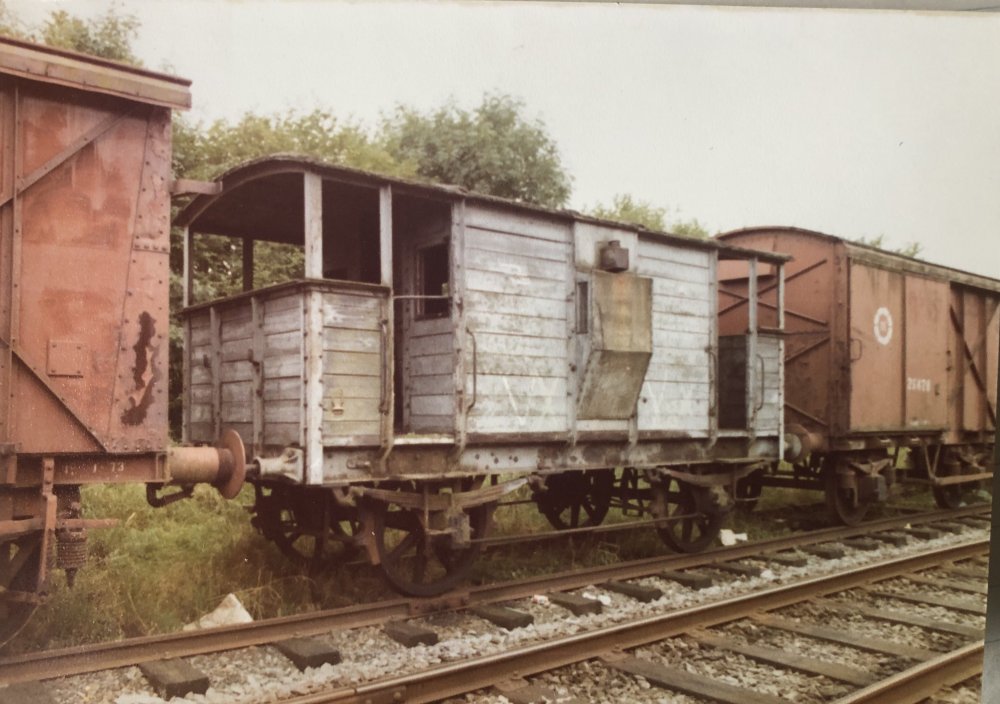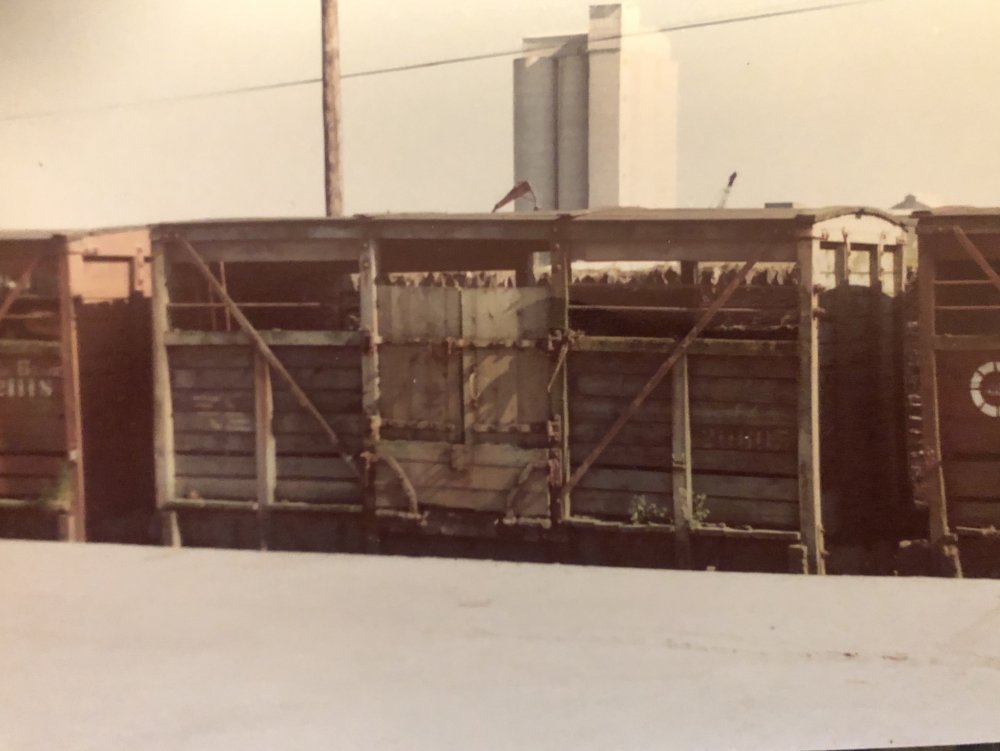-
Posts
15,842 -
Joined
-
Last visited
-
Days Won
393
Content Type
Profiles
Forums
Events
Gallery
Blogs
Store
Community Map
Everything posted by jhb171achill
-
I believe these are the two now at Downpatrick, under cover. If so, one was a second, the other a third, the same as 62M at Whitehead. Can't make out the numbers to tell which was which. Externally, they're similar anyway. On the end of the 2nd class one at Downpatrick, you can see traces of the MGWR brown livery and also the very short-lived dark blue that a few Midland coaches had. (Never more than a few).
-
The six-wheeler (grey) is a Midland 3rd. The red one is an old Bredin or early CIE.
-
I've been gathering stuff for years, Midland man, and I have some of my father's and grandfather's stuff too.
-
What is a DIESEL? I haven’t a clue, can’t even make out where their fireboxes are, but this might help!
-
A superb find, Galteemore. Shows what things were like c1970, with all-brown beginning to replace all-grey, and the great variety of vans.
- 13 replies
-
- 1
-

-
- resin kit
- cattle van
-
(and 1 more)
Tagged with:
-
Things were a lot more informal then as common sense was taken more seriously, and the "claim culture" we have now didn't exist. In the 1970s I wandered into Inchicore, Heuston Goods Yard, Cork Goods yard, places like that, without asking for, or being asked for, any authorisation. It would have been obvious to all I was a "gricer". Occasionally railwaymen nodded at me or stopped to talk. Not once was I treated with suspicion, let alone told to clear off. Many a time I hitched a lift in the cab of a loco, never mind a guard's van. It made for memorable occasions - in the cab of a 141 Cork - Cobh and Claremorris - Ballina, 121s on the Sligo road, 141s and 071s on the GN main line, 071s between Carlow and Dublin, etc etc...and once, a "C" on a ballast from Clonsilla to North Wall. I was on the Mayo road too... 141s, I think....also the Kerry road in a 141 and Dublin - Cork Goods in an "A". Naturally, the world is a very different place now, and different precautions are necessary for a whole range of reasons. My point is - twenty years before I was doing MY wanderings about, it would have been even more casual.
-
Cuisle, 1947. There had been in recent months what remains even today the heaviest snow ever recorded in Ireland. Many towns were entirely cut off for weeks, and running out of essential supplies. Perhaps this is, ironically, somewhat typical now!
-
-
It wasn't exactly an everyday event, of course.... Once, he went to inspect one of the tunnels under Bray Head. A fireman had reported a rock falling off the roof into the tender of his loco. The modus operandi was for Senior and his assistant to get up on a sleeper platform on a flat wagon, which was propelled by a loco from Bray. Using a long pole, they poked and prodded at the suspected area, to see if there was anything else loose!!!! Having found nothing, they reported it safe.... Can you only IMAGINE how THAT would pan out today, with safety concerns!!!
-
They had a light sabre from Star Wars, and they would point it at the DSER goods engine, and shout in unison "BEGONE!!!" Seriously, they had to lift the thing to one side! No H & S back then....! They would liaise with the Traffic Dept., and tell them that they needed, let's say, an hour and a half on some stretch. If there wasn't one of these contraptions nearby they bring one on the goods train to the nearest station and offload it. Usually they could do it in between trains, but sometimes they got a possession. There were a couple of narrow gauge ones two, one now preserved at Dromod. I think the CDR had one too, although when he inspected the CDR track (twice, while working for the NCC) he had one of the older railcars.
-
I hate to say it, Martin, but I strongly suspect you're right! The RPSI's finances are in a precarious enough state at present without this. The DCDR depends on an annual grant from Down Co Council. With the mother and father of all recessions now certain, the council will be watching pennies as never before.
-
Summary of G’s: G601 Class G601 - stored by ITG, Carrick. Long term job. Some engine parts missing. Last of G601 class. G602 - scrapped G603 - scrapped G611 Class G611 - Preserved by ITG at Downpatrick. Currently out of traffic. G612 - scrapped. G613 - Privately owned by a DCDR member, at Downpatrick but currently out of traffic. G614 - scrapped G615 - scrapped G616 - Owned by ITG, currently being restored at Carrick-on-Suir G617 - Owned by ITG, in traffic on DCDR.
-
I’ve up-pinged a few more of Senior’s photos. I will down-ping them onto this page over the next week. Second pic, we’re doing a track inspection on the Harcourt St line in 1940. The mammon the bike was the Dublin Area District Engineer, Mr Joe Nugent, under whose tutelage a newly-qualified jhb171Senior was placed, in the GSR’s Westland Row Civil Engineers Office. He reported directly to the famous P T Somerville-Large. I WELL remember my fathers battered brown case, in which all important documents were carried throughout his entire working life. It’s on the seat of the rail bicycle, and it’ll crop up again during the week in other pics. First person to spot it wins the chance to buy me a feed’o’Guinness once Internment is over. In the first pic we’ve a brief view of 801 at Inchicore in 1940, when still only a few months old, not a great pic, but I like it.
-
611 is at Downpatrick - forgot to mention it; ITG owned. Basically, the ITG’s operational base is now, de facto, at Downpatrick, with their diesels featuring occasionally on public trains. 616 and 601 are at the ITG’s long-term restoration base at Carrick-on-Suir. The ITG has two “C”s as well - one (C231) restored and more-or-less operational at Downpatrick and the other under restoration at Carrick-on-Suir. The ITG also own several unrestored diesels at Carrick, and Moyasta, Co Clare - all in storage. 617 is indeed operational at Downpatrick and is often used to shunt or on PW trains.
-
What way is it rust protected, or how efficiently?
-
Its locked up in the shed.
-
In rural areas, cattle & goods often “kept things going” long after passenger traffic had as good as vanished - and possibly never amounted to much, anyway. Many rural lines on both gauges had one mixed per day plus one or two passenger services. This could have a branch set of two six-wheelers or just one bogie, or maybe a bogie and a 6-wheeler. But for the modeller, the 10-15 wagons on the back are the shunting point of interest. After 1930, by which time road transport was developing, just a few examples off the top of my head - these aren’t absolutely cast in stone, of course, but were absolutely typical. These are just random examples I know of. Foynes - one 6w brake 3rd (plus wagons) Achill - bogie compo + 6w brake Clifden - 6w compo + 6w brake 3rd Castlegregory - 1 or 2 coaches including brake Dingle - 2-3 coaches inc brake Arigna - 1 brake compo Loughrea, Ballinrobe - 2 x 6w, then (Loughrea) one brake standard Drimoleague - Skibbereen - 2 x 6w Belturbet - (GN) 2 x 6w, then 1 or 2 non-corridor bogies; (C & L) 1 coach & a brake van ......and so on.
-
The situation at Downpatrick is as follows. Owned outright by DCDR; E421, E432 Steam Nos. 1 & 3, GSWR No. 90. Owned by a DCDR member: G613 Owned by ITG: G617, A39, B146. Within the RPSI: Everything wholly RPSI-owned, except GNR Loco 85. In the case of this, the actual loco is owned by the Ulster Folk & Transport Museum, but the tender is the RPSI’s. I have not included rolling stock. Both own the majority of their rolling stock, but the RPSI’s State Saloon remains the property of IE. The GSWR coach in Mullingar shed (No. 813) was never RPSI-owned, but is owned by a group of RPSI members and friends (11 in all). Nothing was ever owned by the IRRS, though in the 1960s there was talk of CIE giving them 184. It never happened, as the IRRS is a historical society, not a loco or coach preservation group. 131 was always owned by CIE / IE, even when at Mallow. It only changed ownership to the RPSI when it went to Whitehead.
-
I suspect the result would have been exactly the same, as the main problems were external matters which neither could influence.
-
Senior’s taxi. He used GNR Saloon No 50 as a “runabout” in the 1954-7 period for doing engineering inspections of the GNR’s Western District - territory this vehicle would rarely have seen otherwise. Here he’s out on a bit of a shpin... he was inspecting Enniskillen - Dundalk that day. I have the date somewhere - it’s in either 1956 or 57. The coach would be hitched up to a loco, but the pic is back to front thanks to a printer a few years ago. The loco is 197, which is why he took a pic: more often than not he got an 0.6.0. No. 197 was regularly based in Enniskillen at that time. He had a set of steps which were used to get up and down from the end gangway to the track, when inspecting.
-
Yes, the local authority issue is exactly as above - however - when there is a local sportsman or politician to be honoured in a rural location, they'll get it done by hook or by crook. The lack of enthusiasm in local authorities is principally driven by the inescapable facts that in rural Ireland, "everybody" thinks a heritage railway would be a great idea, bit NOBODY is prepared to PAY for it; this, of course, introduces the local councillors who are influenced by their voters. As long as there's a need to fix the bend in the road, refurb the GAA pitch, make a statute to the only famous person the town has ever had, house the homeless (very correctly so), and provide two new classrooms for the local school, no man-on-the-street would be remotely in favour of spendîng a solitary red cent on a heritage railway. European grants..... no longer available in the north, and much more restricted now in the south as it is deemed one of the wealthy rather than poor EU countries. Given our lack of population, mining industries and coal-based industry and the like, there isn't the same knowledge out there in the public domain as in Britain. Britain is twice the size of Ireland but has ten times the population, and an industrial past. Sadly, public interest in railway heritage will never be anything but a small fraction of what prevails in Britain. C'est la vie!
-
The van, as Galteemore says, is a "palvan", always visible in a good train as they were slightly taller than other vans. That GSWR ballast wagon is the same as the ones that ended up at Downpatrick or Whitehead. Each has one, the Whitehead one now restored and on display in the museum. I'd guess there were still maybe half a dozen still about at the time I took the pic.
-
In the 1970s there were still a few grey wagons about - possibly a quarter of the four-wheeled fleet. A few still had pre-1963 stencilled “flying snails”. So it’s flying snail time: The “H” Van is in the Crossmolina Siding at Ballina, 1976. The GSWR ballast wagon is at Port Laoise PW the same year or possibly 1977/8. The GSWR guards van, believed the last in use, is out of use at Rock Street, Tralee, at the same time. The cattle truck is one in a line, withdrawn the previous year, awaiting scrapping in Cork goods yard in 1976.
-
The RPSI, as a registered museum, is not allowed to randomly lend out listed artefacts unless the likes of the Downpatrick & Co Down Railway, in other words, a properly accredited museum. Even if they wanted to, they can't lend to local interest groups or informal committees. This is NOT to do down such groups; they do amazing local community work - it is simply a reality of life. I was on the RPSI's management committee at the time and I recall several informal conversations. But the deal was always - and always HAD to be - if someone on Mullingar builds a proper museum, staffs it and insures it, we are open to offers. Sadly, such a thing was never close to happening; the same is true of the absolutely disgraceful shambles that the local authority in Tralee has made of the T & D line. There just isn't the interest here. This sounds defeatist, but it's true. It's probably the hardest and most consistent lesson that over 25 years in the running of the RPSI and DCDR has taught me.
-
I was involved with the RPSI then, and while there had been talk of "Lough Erne" being borrowed, it never hardened into a serious discussion at the Board, let alone happening. However, at the same time, ANOTHER potential preservation scheme which never even got off the ground, asked if the loco could be lent to them as a static exhibit. That, too, never hardened into a serious enquiry.
.png.c363cdf5c3fb7955cd92a55eb6dbbae0.png)

